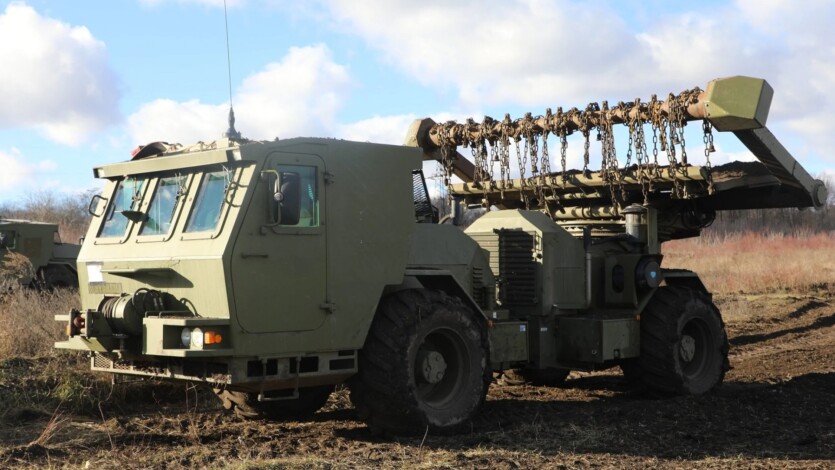
In 2023, the publication Time reported that as a result of the full-scale Russian invasion, Ukraine has become the most mined country in the world. The Hydrema MCV 910 mechanized demining machines provided by our Danish partners can help speed up the clearance of the de-occupied territories from explosive ordnance. We’ll tell you how they work and what they can do.
Content
The history of minefield chains
One of the most common types of bladed weapons in the Middle Ages was the battle chain, a long wooden handle to which a metal club of cylindrical, spherical, or pear-shaped shape was attached with a chain. At the beginning of the Second World War, the principle of the battle chain suggested to British army engineers a way to make passages in minefields.
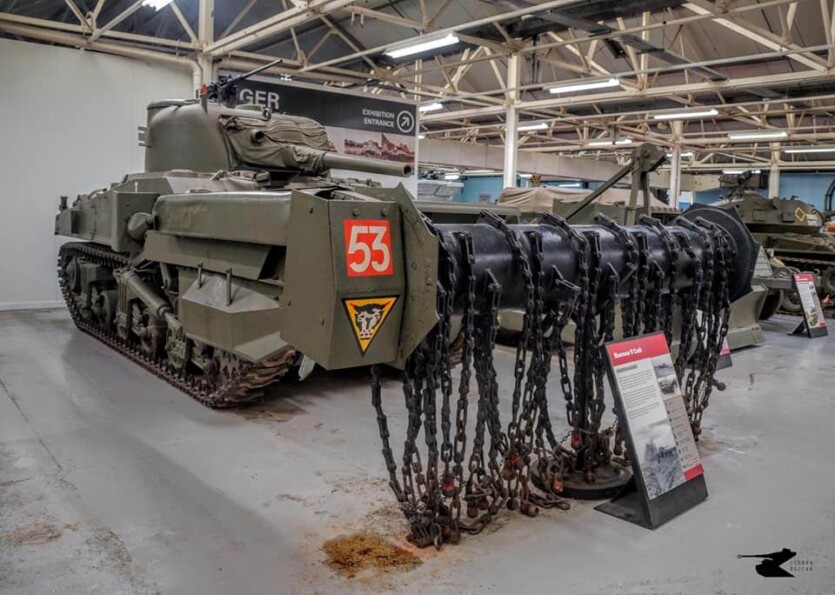
A minefield chain consists of several heavy chains ending in fist-sized steel balls attached to a fast rotating rotor mounted on two levers in front of a tank or powerful machine. The rotation of the rotor causes the chains to hit the ground hard, which causes the mines to detonate without significant damage to the chains or the vehicle.
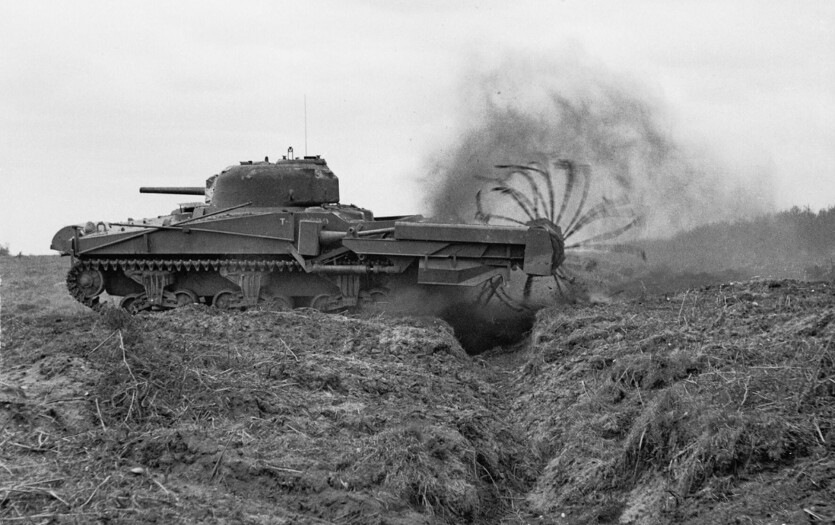
The first mine chains on British Matilda tanks were used in 1941-1942 during the Libyan Desert campaign. Later, American M4 Sherman medium tanks were adapted for them. A specialized version of the M4 Sherman Crab had a strong shaft with 43 metal chains and allowed it to make passages in minefields at a speed of 2 km/h.
Modern analogues of minefield chains are used by both the army and civilian organizations engaged in humanitarian demining. Unlike their World War II predecessors, they are usually mounted on platforms that are unarmed but equipped with armor to protect the operator from explosions.
Hydrema 910 mechanized demining machine
Hydrema MCV 910 (Mine Clearing Vehicle) — a specialized mechanized demining vehicle manufactured by the Danish company Hydrema Defens and is designed for the safe detonation of anti-personnel or anti-tank mines with a capacity of up to 10 kg TNT equivalent located at a depth of up to 30 cm.
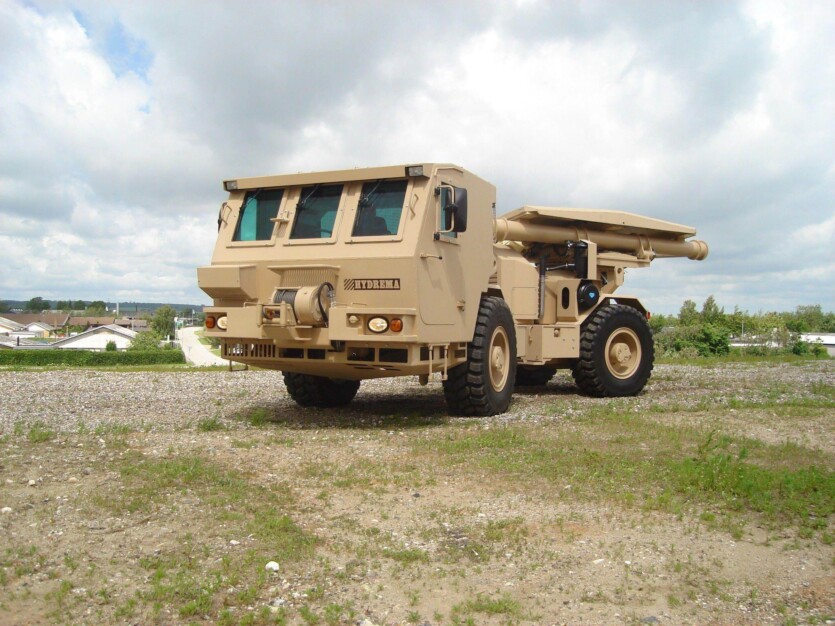
The first Hydrema 910s rolled off the production line in 1996. Since 2002, they have participated in allied operations in Afghanistan, including mine clearance around the Bagram Air Base. Currently, the largest fleet of Hydrema 910s is owned by the US Army. There, they are known as M1271 Mine Clearing Vehicle, or «medium demining vehicle».
Starting in 2024, the Hydrema 910 joined to demining the de-occupied territories of Ukraine. According to the Ministry of Defense of Ukraine, the Danish machines have already cleared more than 560 hectares of Kharkiv region. In the future, the work will go faster, as Hydrema 910 production is to be localized in Ukraine. Related arrangement was achieved in 2023.
Combining performance and security
Structurally, the Hydrema MCV 910 is an 18-ton biaxial vehicle with two sections connected by a hinge to increase maneuverability and cross-country ability. At the rear of the body is a rotating shaft on which 72 heavy chains with metal balls or cylinders at the ends are fixed.
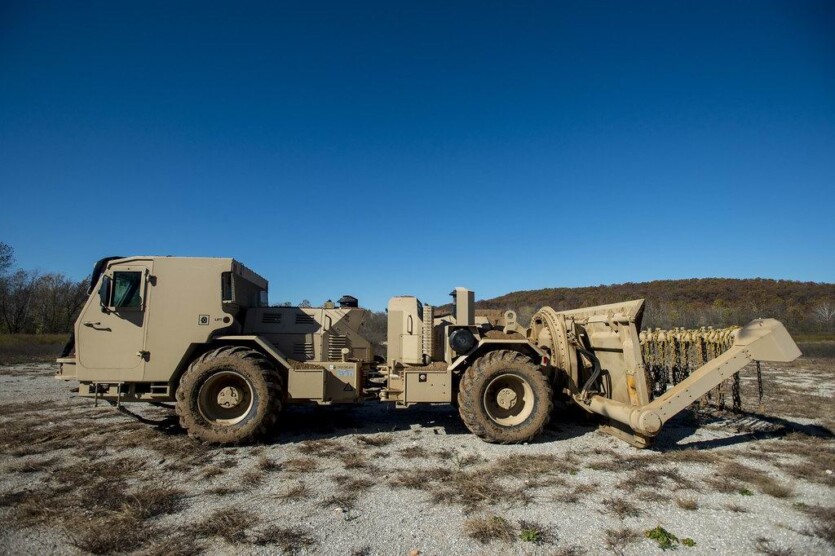
The Hydrema 910 effectively destroys or forces the detonation of mines buried to a depth of 30 cm in a 3.5 meter wide strip, which is enough to pass most armored vehicles. At the same time, it is able to withstand an explosion of up to 10 kg of TNT equivalent and remains compact enough to be transported by rail. The vehicle’s maximum axle load of 10 tons allows it to travel on ordinary roads and bridges.
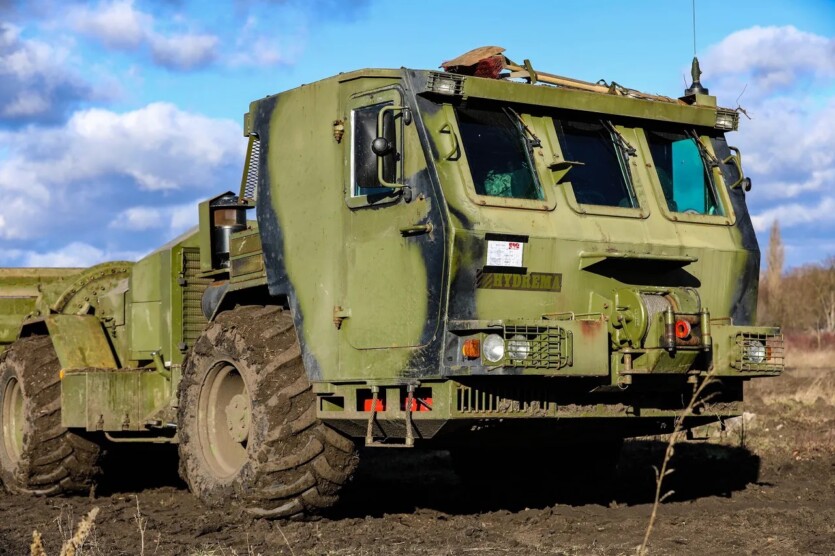
The vehicle is powered by two identical Perkins 1006-6TW diesel engines with a capacity of 185 hp. The traction engine is located in the front and allows for speeds of up to 42 km/h. The rear engine drives the minefield chain and is equipped with hydraulic pumps for lowering it. For added safety, the engines can be reversed. This allows you to leave the minefield even if one of the engines is damaged.
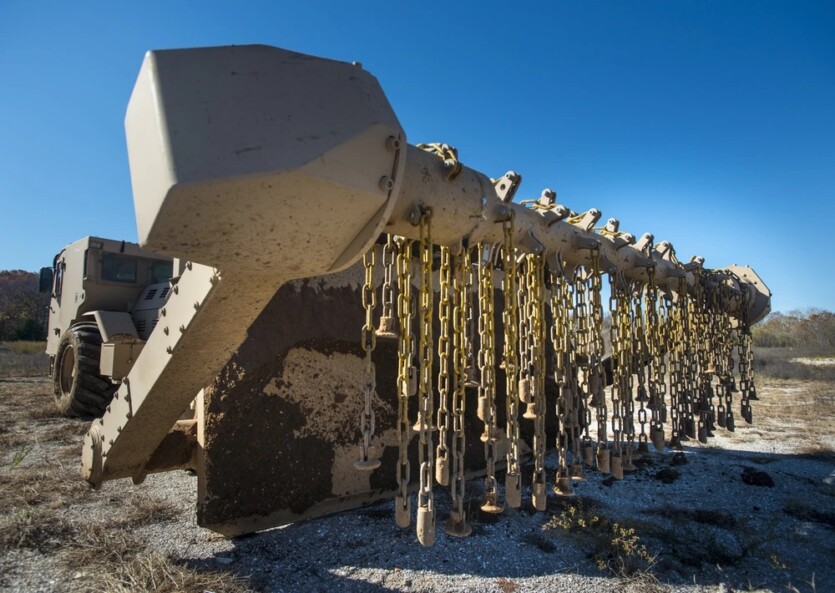
The levers on which the «thresher» is mounted are made of strong steel to withstand explosions. It is separated from the front of the hull by a thick armor steel deflector shield that absorbs the pressure of the blast wave and reliably protects the cab from mine fragments. The cab is also armored to protect the crew from 7.62 mm small arms fire and mine and shell fragments.
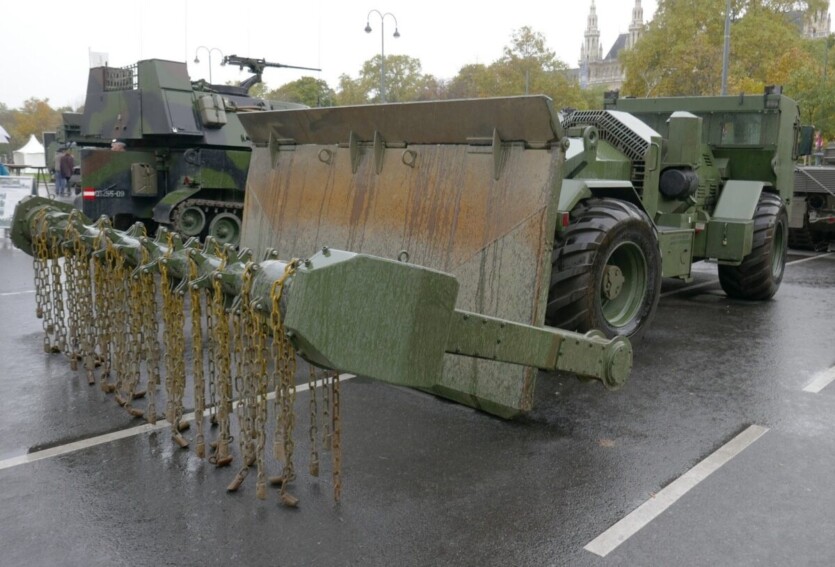
An additional baffle plate is installed below the cab for added safety during explosions. The articulated joint between the axles also contributes to safety by ensuring that the wheels follow the same trajectory. Thus, any missed mines will be detonated by the wheels farthest from the cab. By the way, the wheels themselves are equipped with bulletproof tires to ensure uninterrupted movement in all conditions.
Backwards: how the Hydrema MCV 910 works
The Hydrema MCV 910 approaches mined areas like a regular car. However, its deflector shield and shaft are in the retracted position to reduce the overall width of the machine. On site, the operator activates the hydraulic tilt/tilt system, which makes the machine ready for action in less than 2 minutes without any tools.
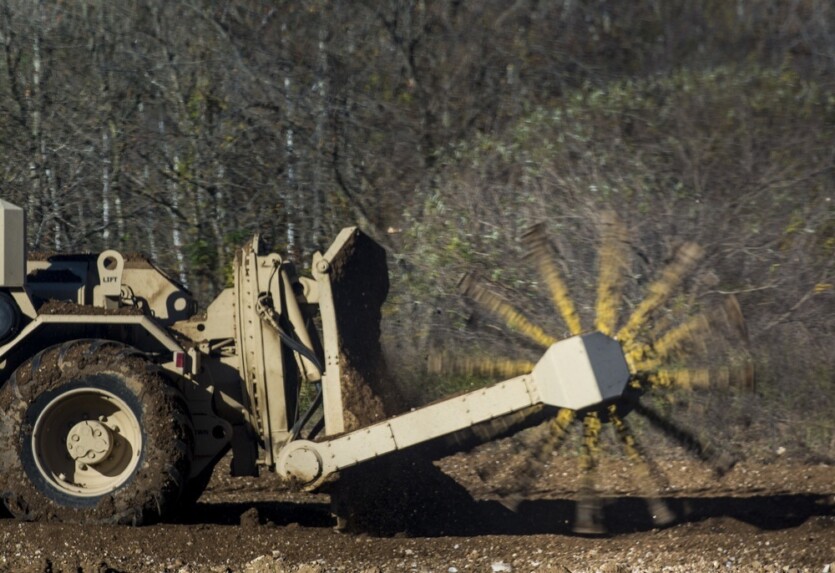
Before starting demining, the operator can set the type of soil and the depth of impact of the chains. After that, the Hydrema MCV 910 slowly drives in reverse through the minefield, excavating and defusing all mines in its lane. This operation scheme keeps the cab as far away from possible detonations as possible.
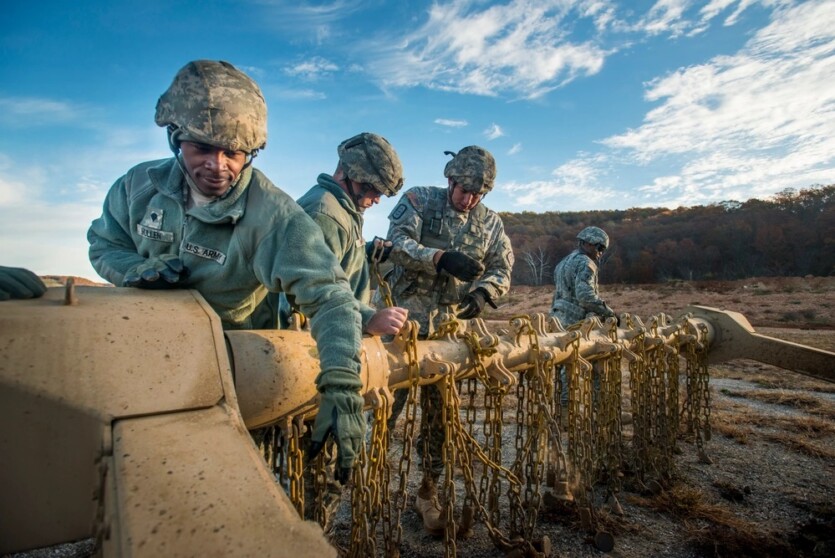
The demining process can be controlled manually from the swivel seat in the cab. Another option is to hand over the reins to the computerized electronic supervision and control system, which offers an automatic driving mode with depth control and terrain adjustment. Together with the heating and air conditioning systems, this creates a comfortable working environment and reduces the likelihood of errors.
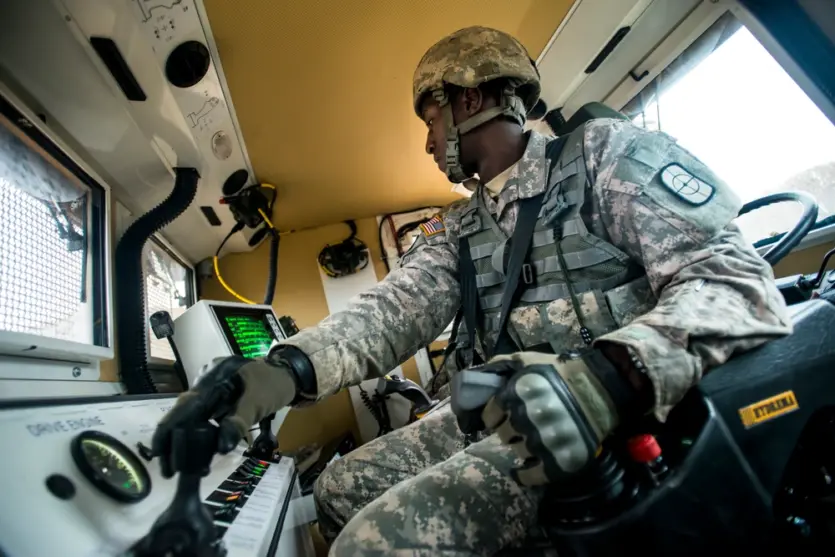
To summarize, the Hydrema MCV 910 allows for rapid clearance of large areas and has certain advantages over minefield chains mounted on tanks, such as the German Keiler system. Firstly, its driver is much further away from the chain and, accordingly, the explosions. Secondly, the lighter weight and smaller dimensions of the wheeled platform provide much better mobility.
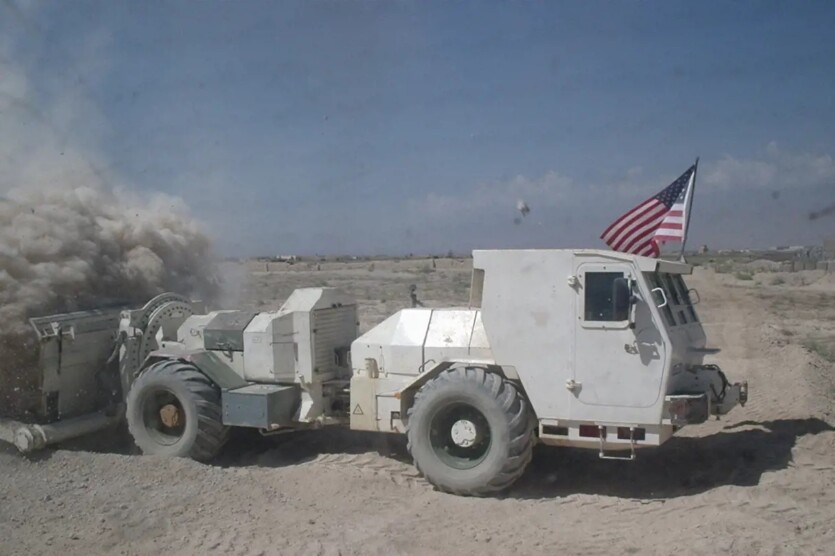
At the same time, the mine-circuit system itself has its drawbacks, the main one being the inability to reliably detonate all 100% of the mines in the area of operation. Some mines, such as the Italian MAT/6 anti-tank mine, are designed to be resistant to chains. Effective demining can also be hampered by a slope of more than 30%, marshy soil, or a large number of stones with a diameter of more than 5 cm.
Technical characteristics of Hydrema 910
| Year of development | 1996 |
| Manufacturer | Hydrema (Denmark) |
| Weight | 18 т |
| Length | 9.2 m (movement) 10 m (demining) |
| Width | 2.8 m (movement) 4.69 m (demining) |
| Height | 2,7 м |
| The crew | 1+2 people (driver and optional operator) |
| Engine type | Two Perkins diesel engines 1006-6TW |
| Engine power | 185 hp. |
| Speed | up to 42 km/h (driving) 1-13 km/h (demining) |
| Booking | Protection against 7.62 mm bullets and shell fragments |

Spelling error report
The following text will be sent to our editors: